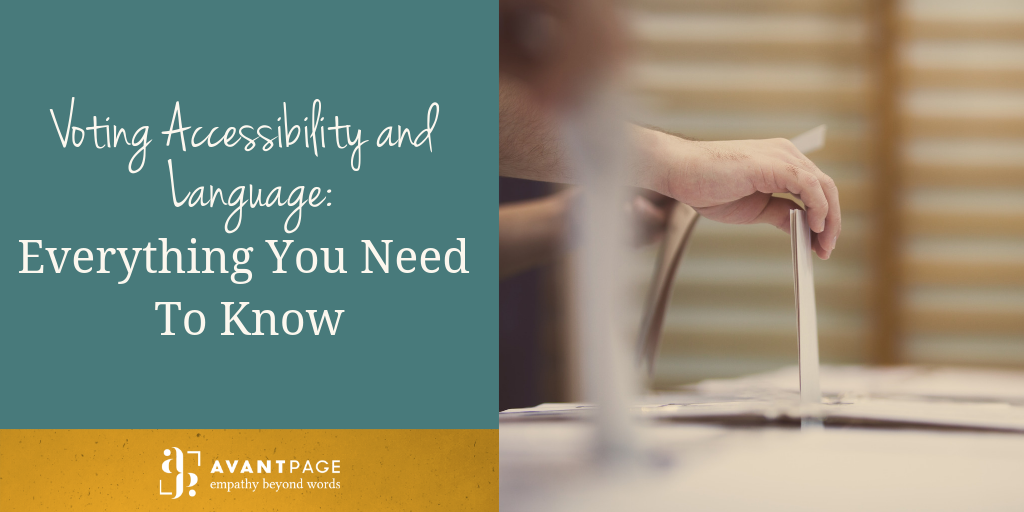With more than 25.1 million Limited English Proficient (LEP) individuals ready to vote in elections, a key part of your election planning must be considering voting accessibility. While voting accessibility includes a wide variety of topics, the most impactful for LEP individuals is language access. Your LEP constituents need voting materials they can connect with and understand without issue.
The federal government supports the needs of LEP individuals by setting regulations for translation and interpretation to support voting accessibility. These regulations apply all the way from voter registration to election day to ensure LEP individuals can engage with the democratic process.
Voting Accessibility and Language Groups
Your county needs to translate documents for specific groups based on their percentage of the population in your area, or literacy rate. Your county needs to translate documents for minority language groups that:
- Have more than 10,000 people OR
- Constitute more than 5% of all citizens OR
- Live on an Indian reservation, and more than 5% of all reservation residents use the language AND
- Have a higher illiteracy rate than the national illiteracy rate
If your county has less than 10,000 people in a minority language group, but the number of people constitutes more than 5% of all voting age citizens, voting accessibility requirements still dictate that you must translate your documents for that group. The groups must have a higher illiteracy rate than the national illiteracy rate to be considered vital in terms of translation.
Voting Accessibility and Language Access
Once you’ve determined what groups you need to translate your county’s documents for, your next step is to determine what documents, software, and other voting materials need to be translated. According to the U.S. Election Assistance Commision, the following must be translated for your specific minority language groups:
- Ballots, including official, sample, and absentee ballots
- Voting instructions
- Online voting information
- Voter registration information
- Polling place notices
- Voter information pamphlets
An additional requirement is that your polling place must staff bilingual workers for the affected minority language groups.
Voting Accessibility and Alternative Formatting
ADA populations have their own voting accessibility requirements. All counties must meet the ADA voting accessibility requirements to ensure ADA individuals have access to participate in the democratic process.
To maintain compliance with ADA voting rights, your county needs to provide braille-formatted materials at the polls, including ballots and voter instructions. Audio devices that provide meaningful access to the information being read must also be available at your polling place. Finally, for ADA-covered individuals, you must be willing to provide in-person support to those that are voting, including reading ballots and voter instructions aloud.
If you’re worried about the status of your county’s translations, or just want to make sure you’ve translated all of the necessary documents to remain compliant, give us a call at (530) 750-2040 or request a free quote. We can help you get and stay compliant with all federal voting accessibility requirements.
Get valuable content delivered directly to your inbox. Sign up for our newsletter today!

Ash is the Marketing Coordinator at Avantpage, Inc. Ash works to create high-value, targeted content that allows consumers to connect with us at Avantpage. They are a strong proponent of everyone having equal access to communication and information. They have written and created content for a variety of online platforms, and have been published in over 30 online platforms with varying topics. But Ash is other things too! An avid athlete, Ash enjoys spending their free time rock climbing, partaking in aerial circus sports, and practicing acroyoga.
